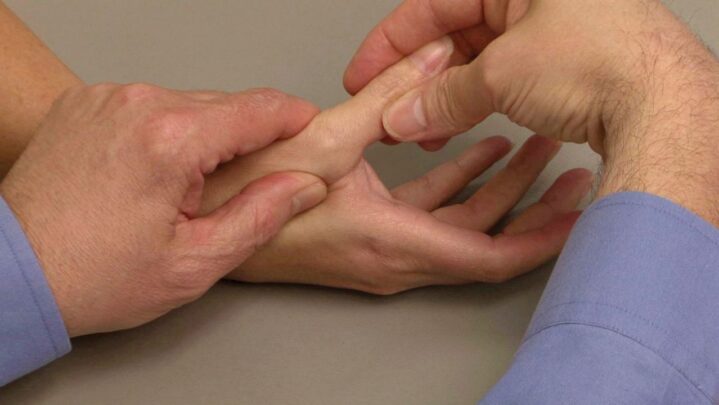A finger that has been sprained has soft tissues, such as ligaments, that have been ripped or strained. These soft tissues support your joints and link one bone to another.
Sprains of the fingers are frequent. They typically result from trauma or sports-related injuries (such as a car accident or fall for example).
A finger that has been sprained might become stiff and swollen, and it can be quite painful. Mild sprains are frequently treated at home. You should visit a doctor if your symptoms worsen or continue.
Injury is the primary cause of most finger sprains. Sprained fingers can result from an accident that causes your finger to bend incorrectly or too far backward (hyperextension). This kind of injury frequently happens when participating in sports like basketball, football, or volleyball.
A finger sprain can also result from falling on your hand. This kind of injury may be more likely if your ligaments are frail or if you struggle with balance or coordination. Sprained fingers can also result from accidents, including automobile crashes and injuries sustained at work.
What signs would you expect from a sprained finger?
The following are the primary signs of sprained fingers:
1. Your finger joint hurts as you try to move it.
2. Your finger feels stiff.
3. Your finger joint is swelling.
4. Sensitivity at the finger joint.
Your doctor checks you and inquires about your symptoms to determine whether you have a sprained finger. To test how well your finger moves, they have you extend and flex it. Additionally, they examine and feel your joints for soreness and swelling.
An X-ray may be prescribed by your doctor to check for fractures. When a doctor detects a finger sprain, you often don’t require imaging tests like an MRI, though they could occasionally advise one.
Depending on how severe your sprain is, your healthcare professional may give you a grade:
Grade 1: There are little rips in your ligament. You have a stable joint (not likely to move out of alignment).
Grade 2: Your ligament has partially ripped. Your joint exhibits some instability (possibility of moving out of alignment).
Grade 3: Your ligament has been totally ripped. Your joint has severe instability (likely to move out of alignment).
The ligament injury might occasionally be so bad that it causes a dislocation. This happens when your joint is out of alignment due to the finger bones being shifted (dislocated) from their original location.
Also Read: Signs And Symptoms Of Weak Pelvic Floor





